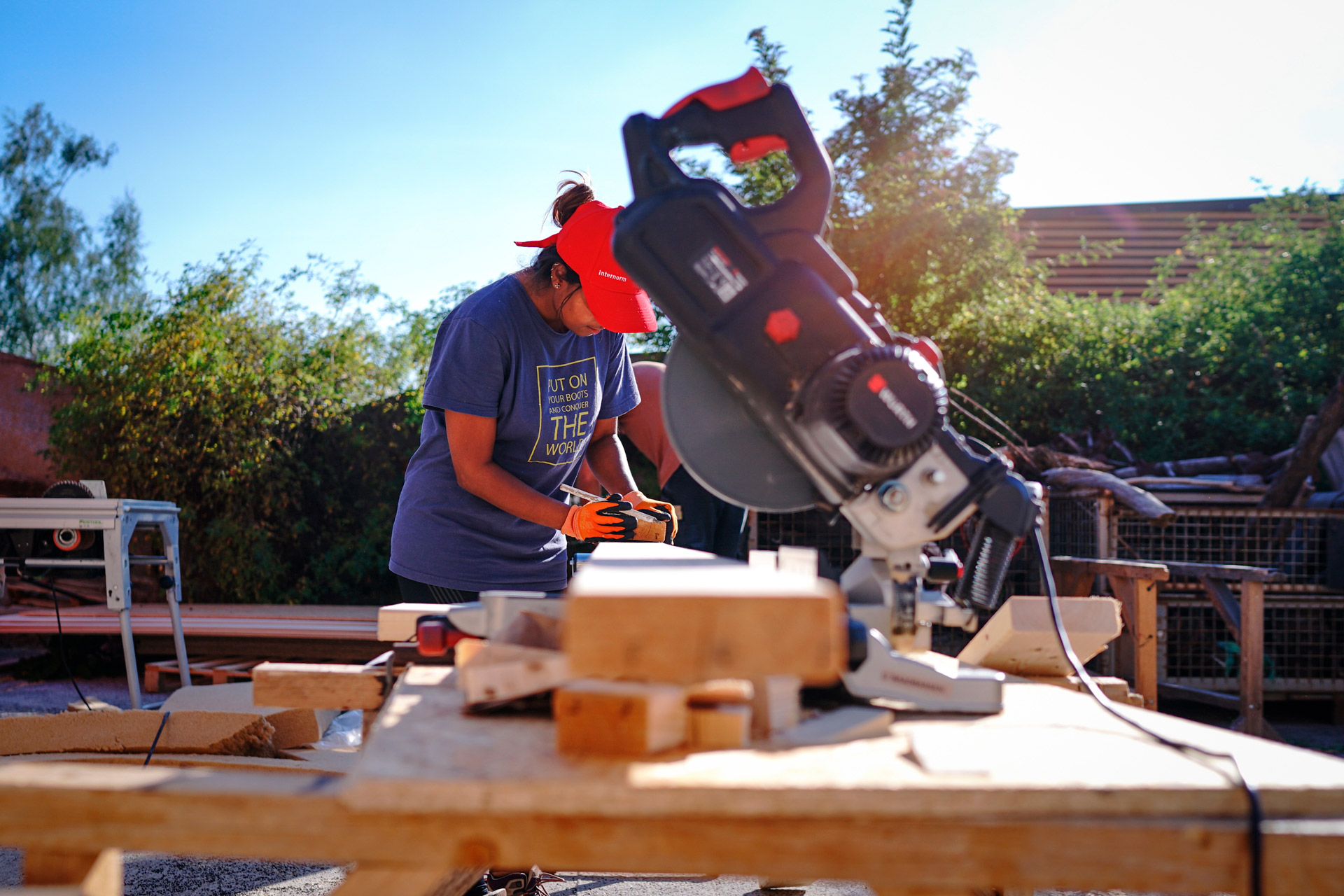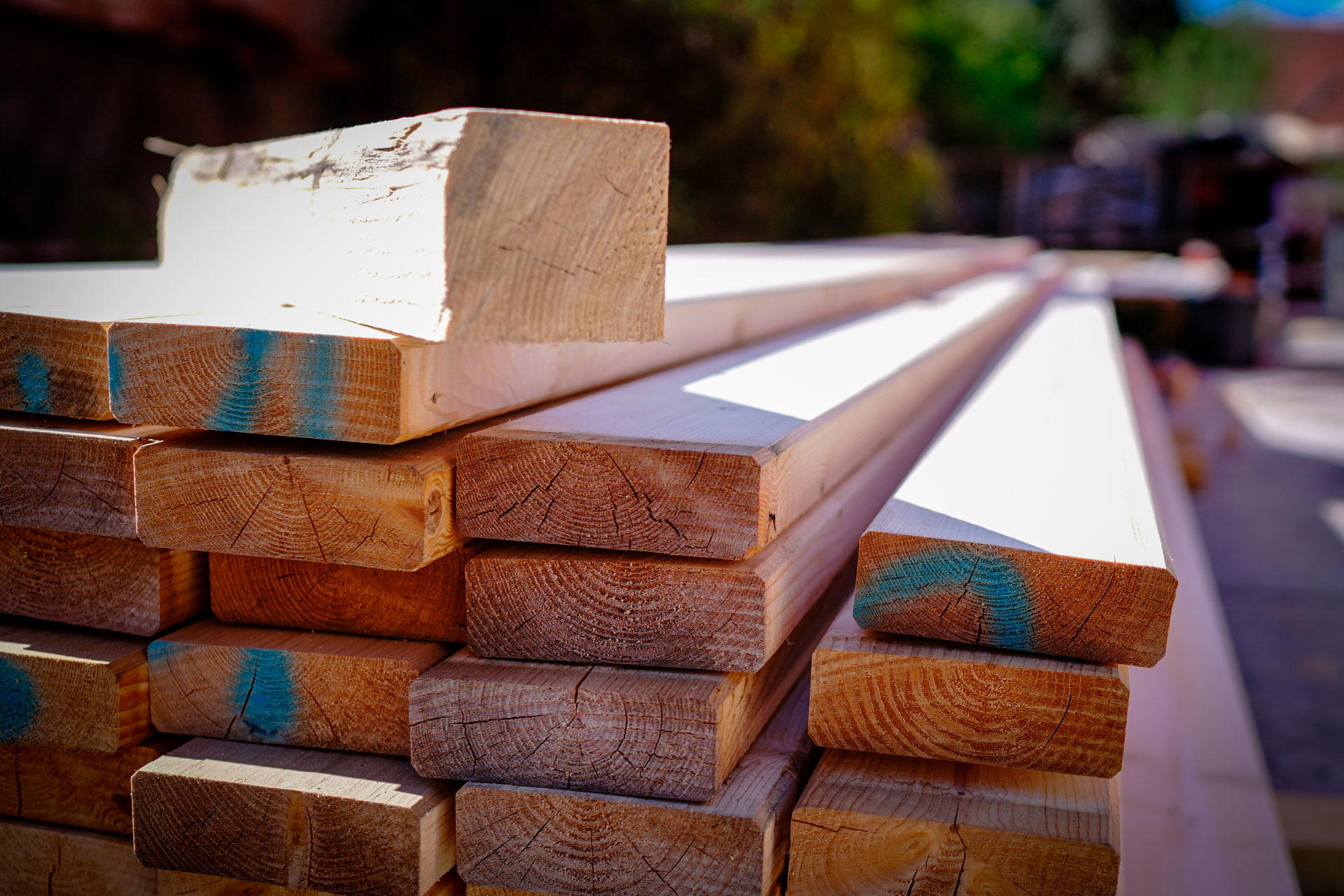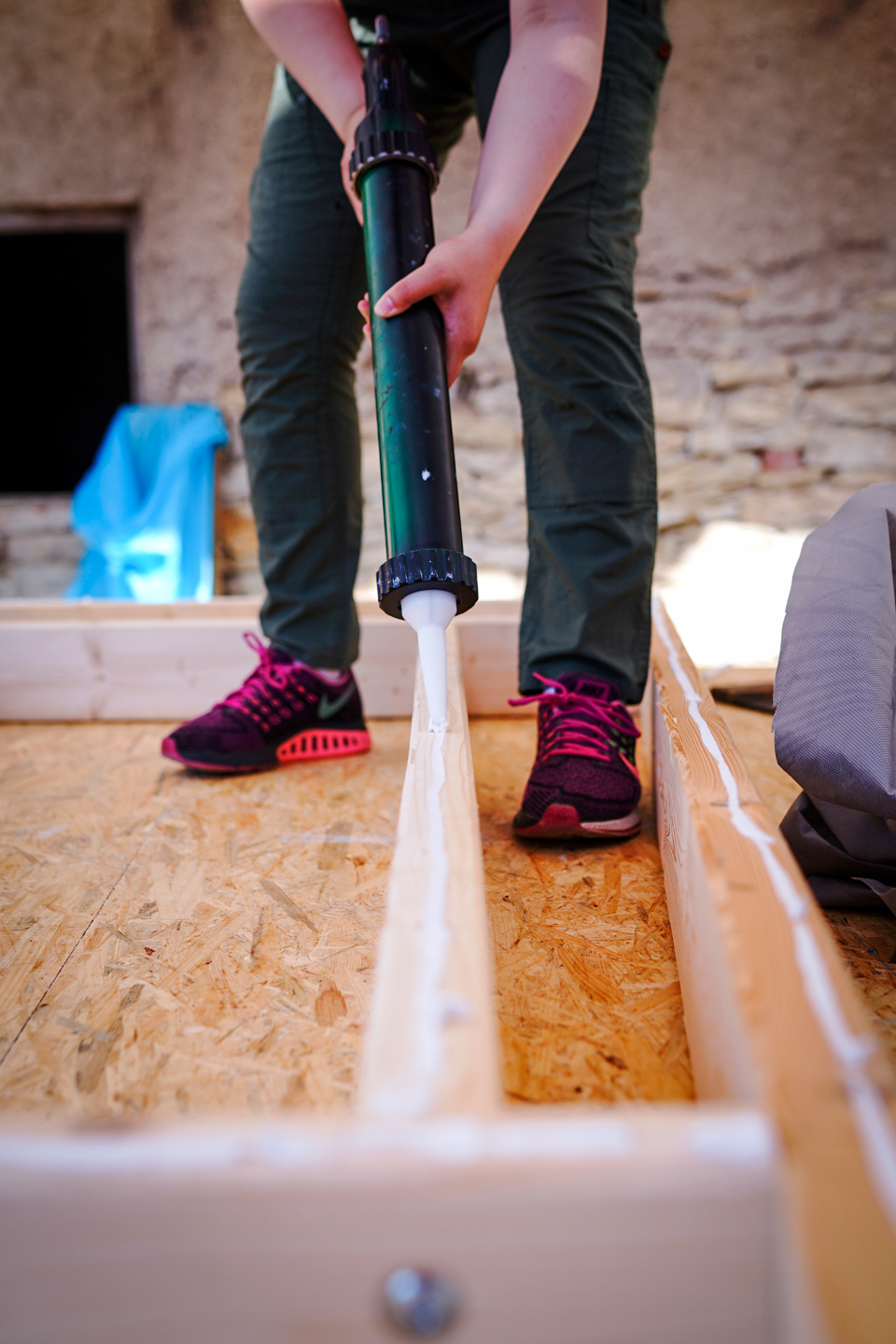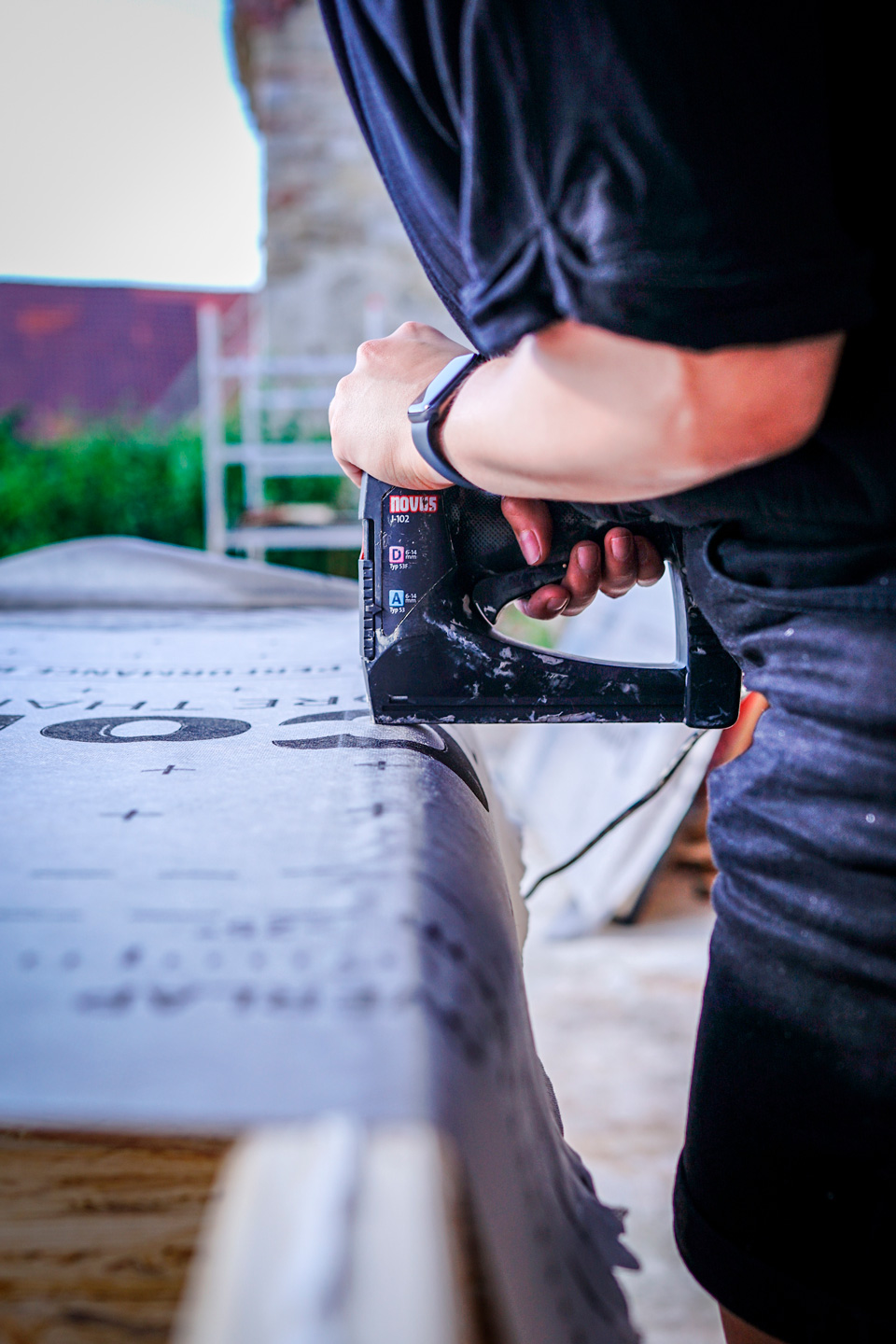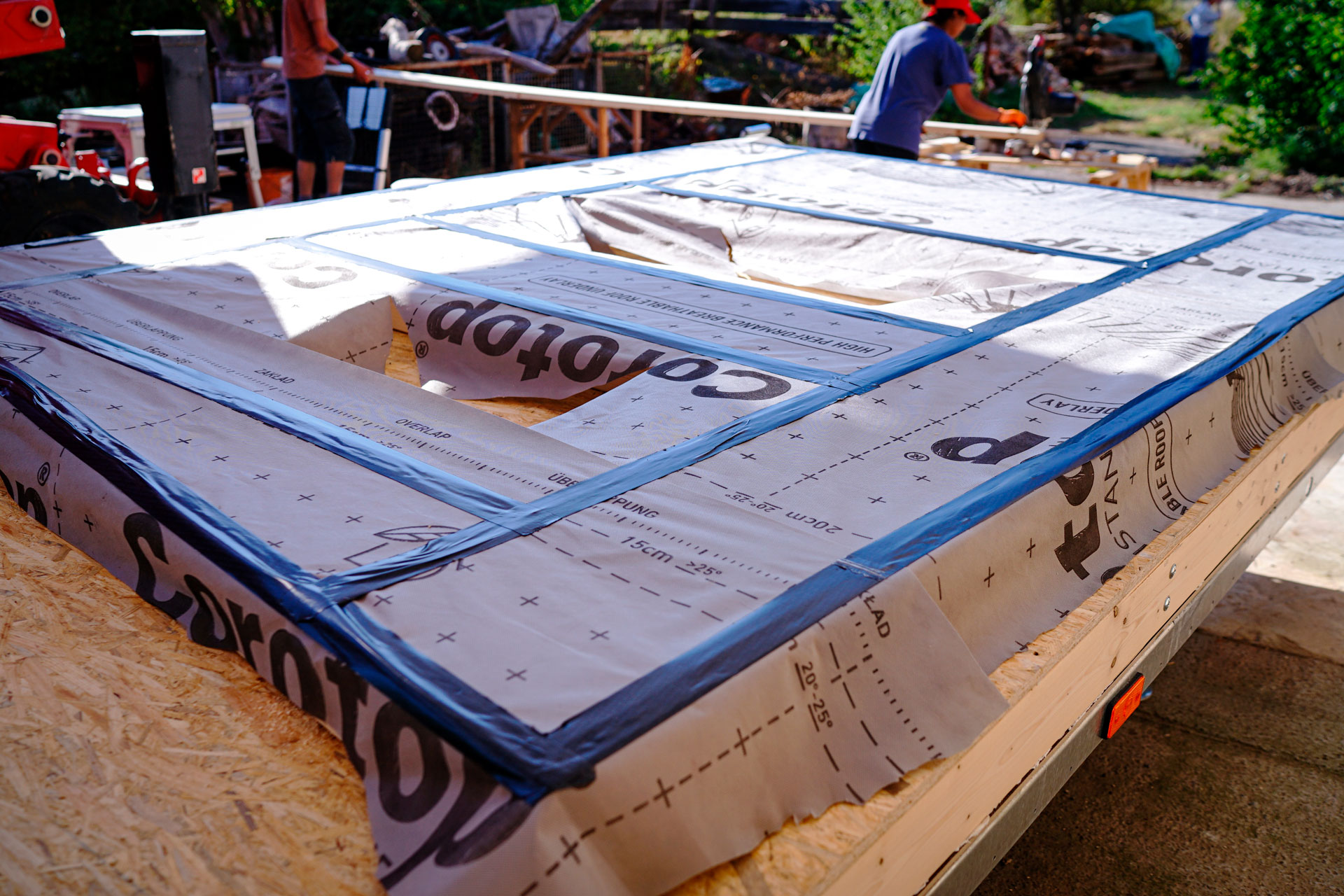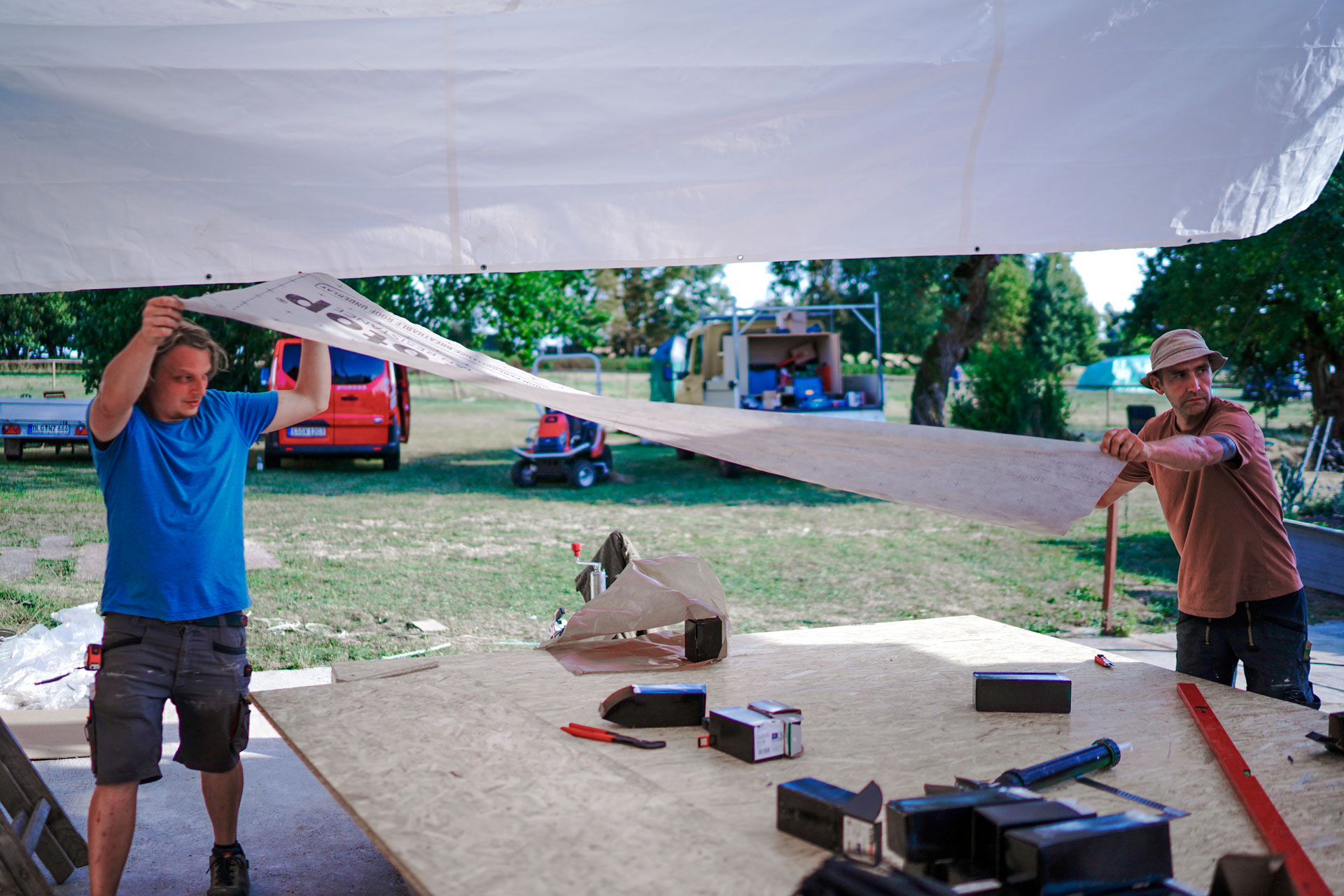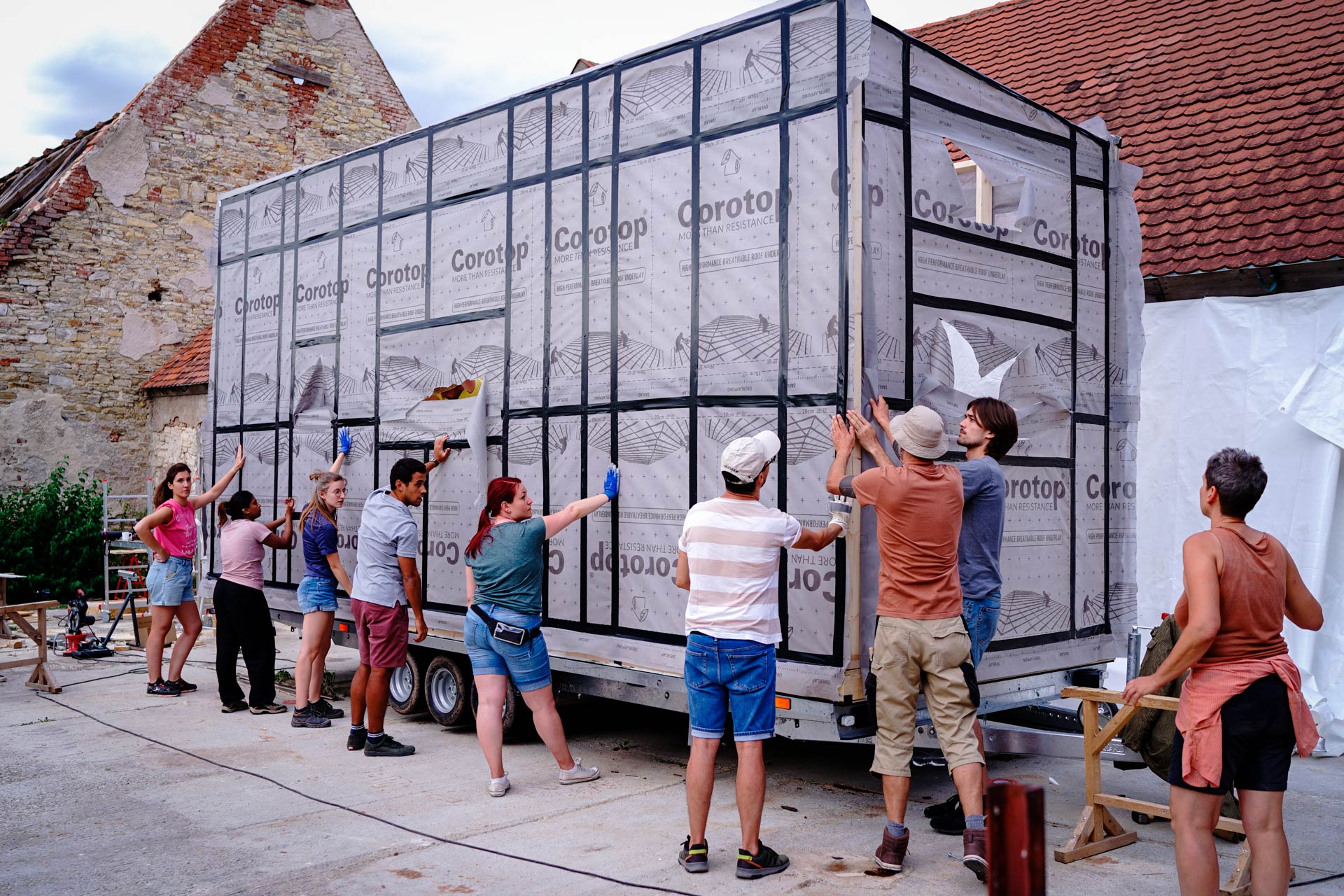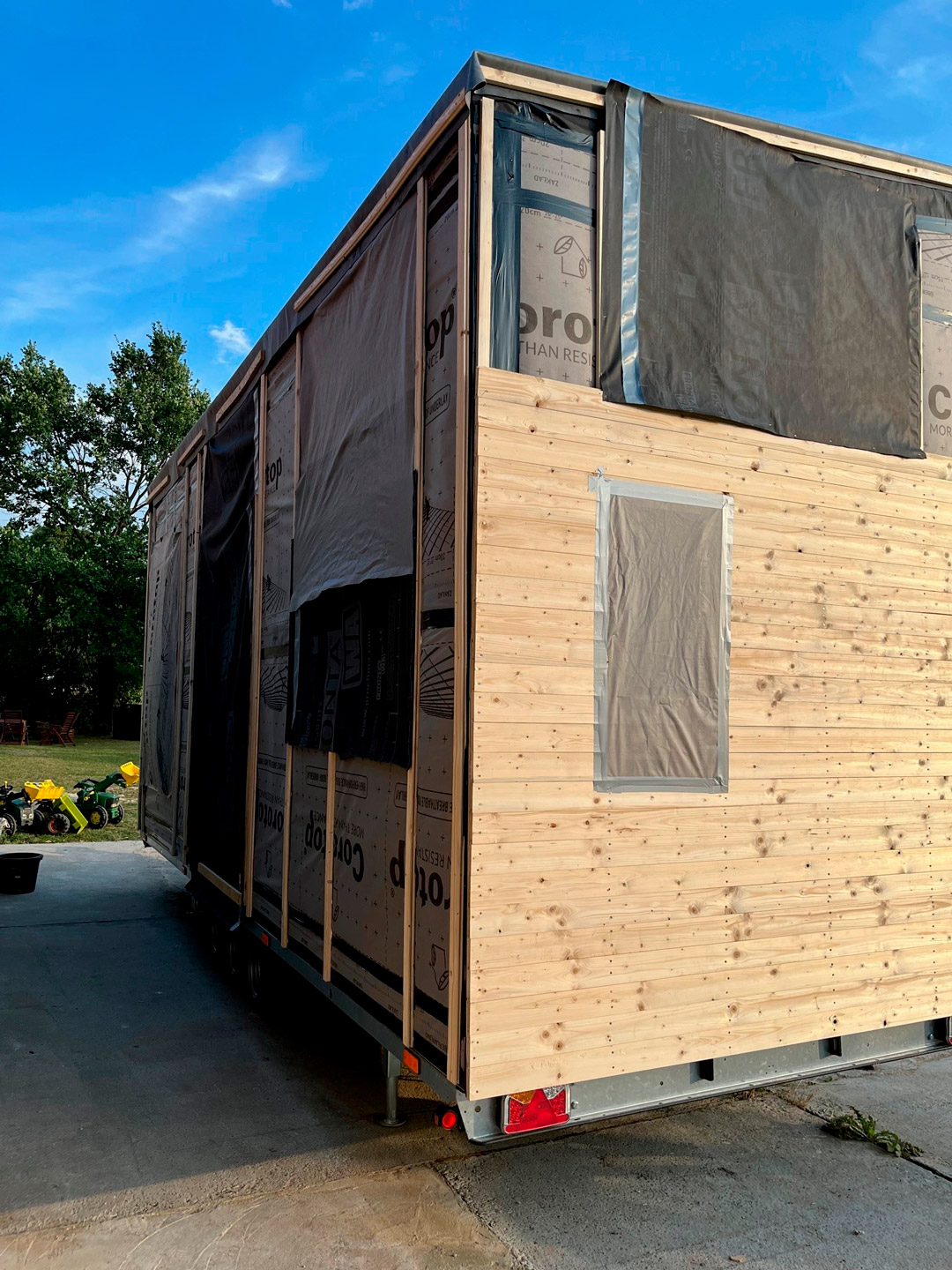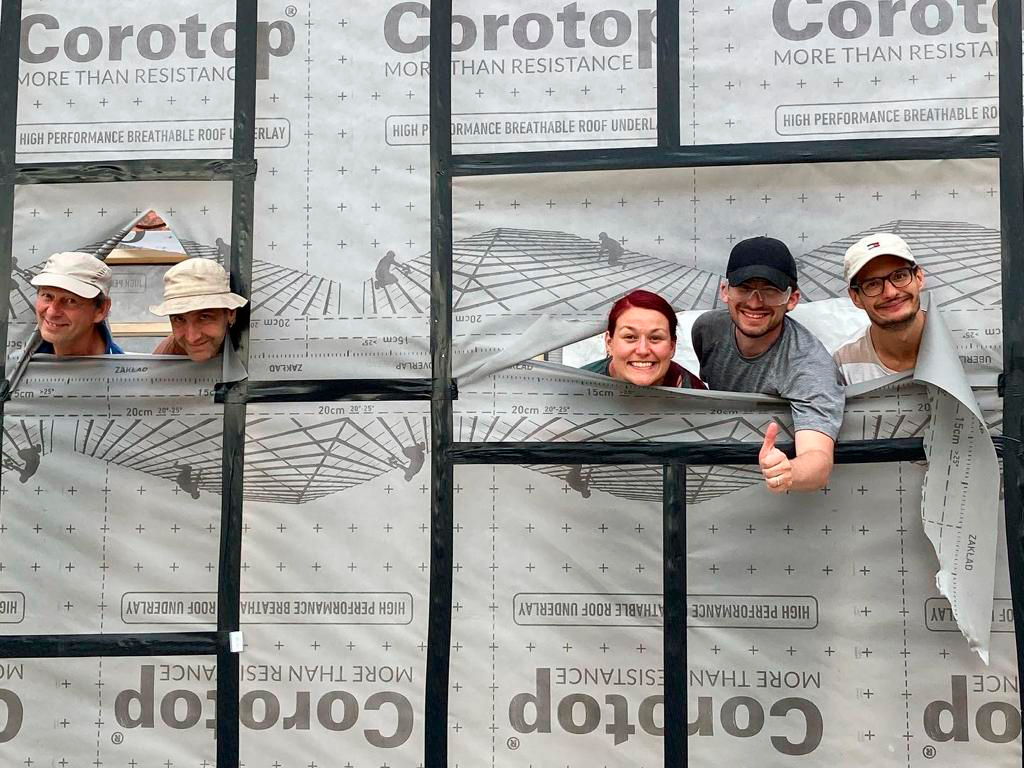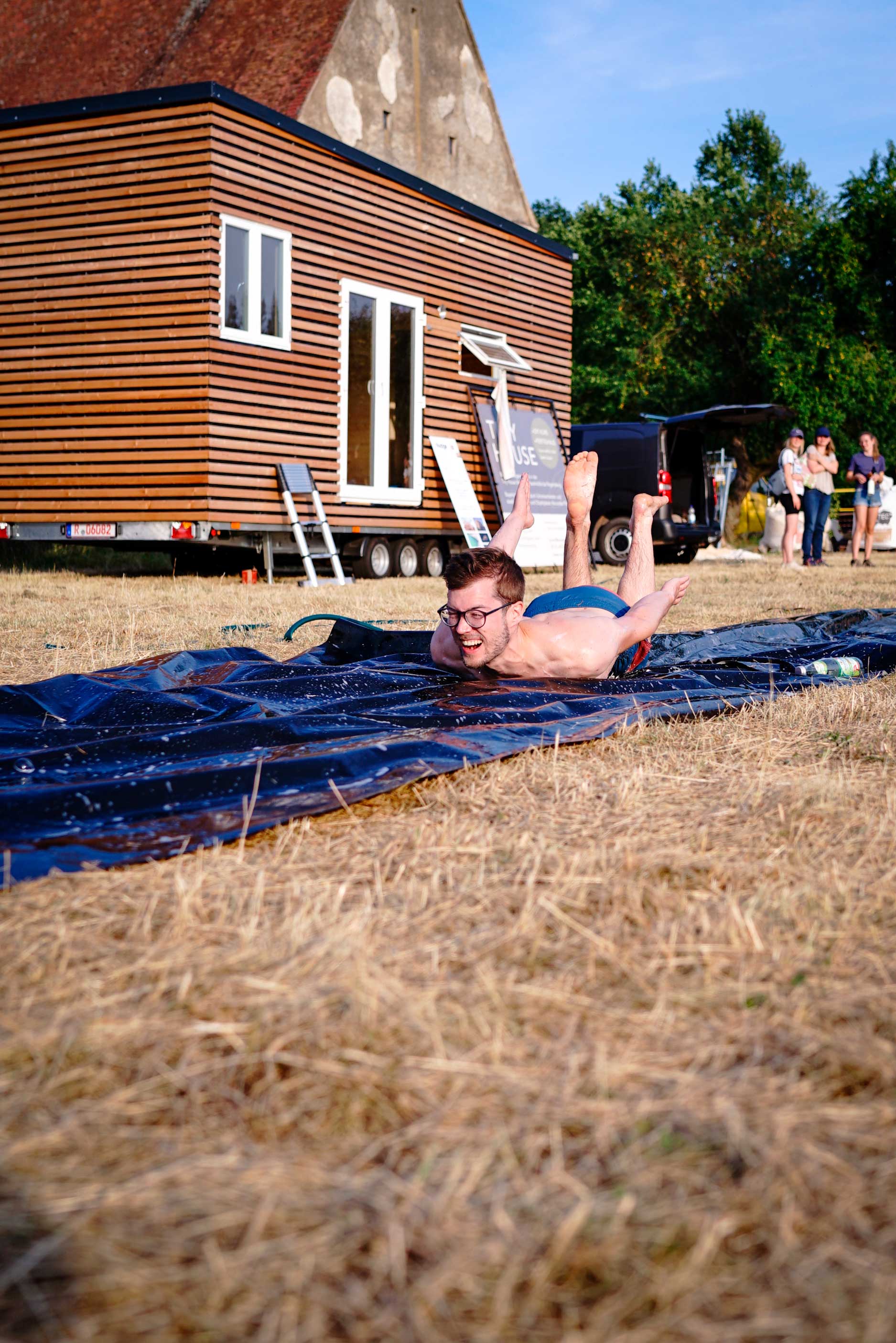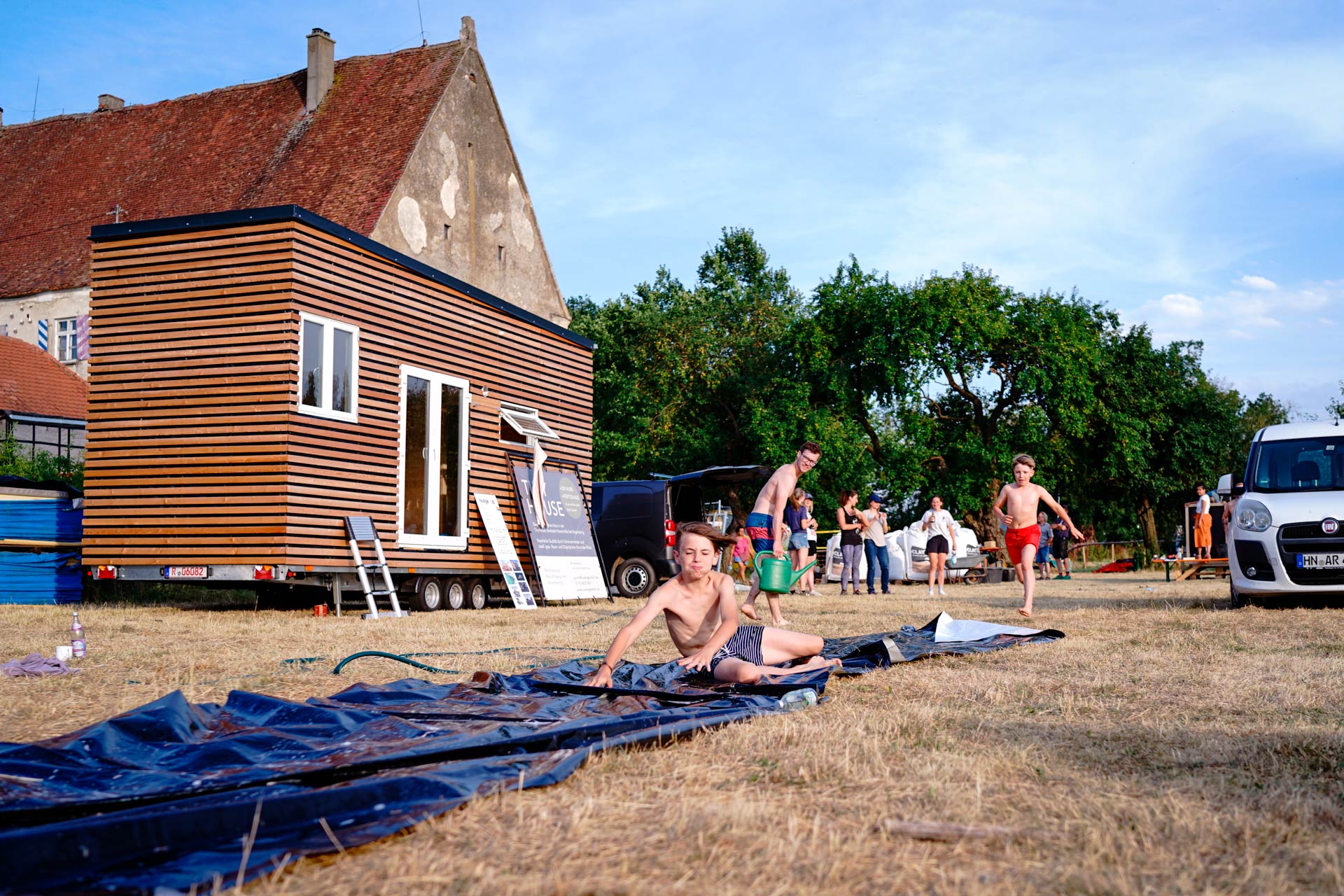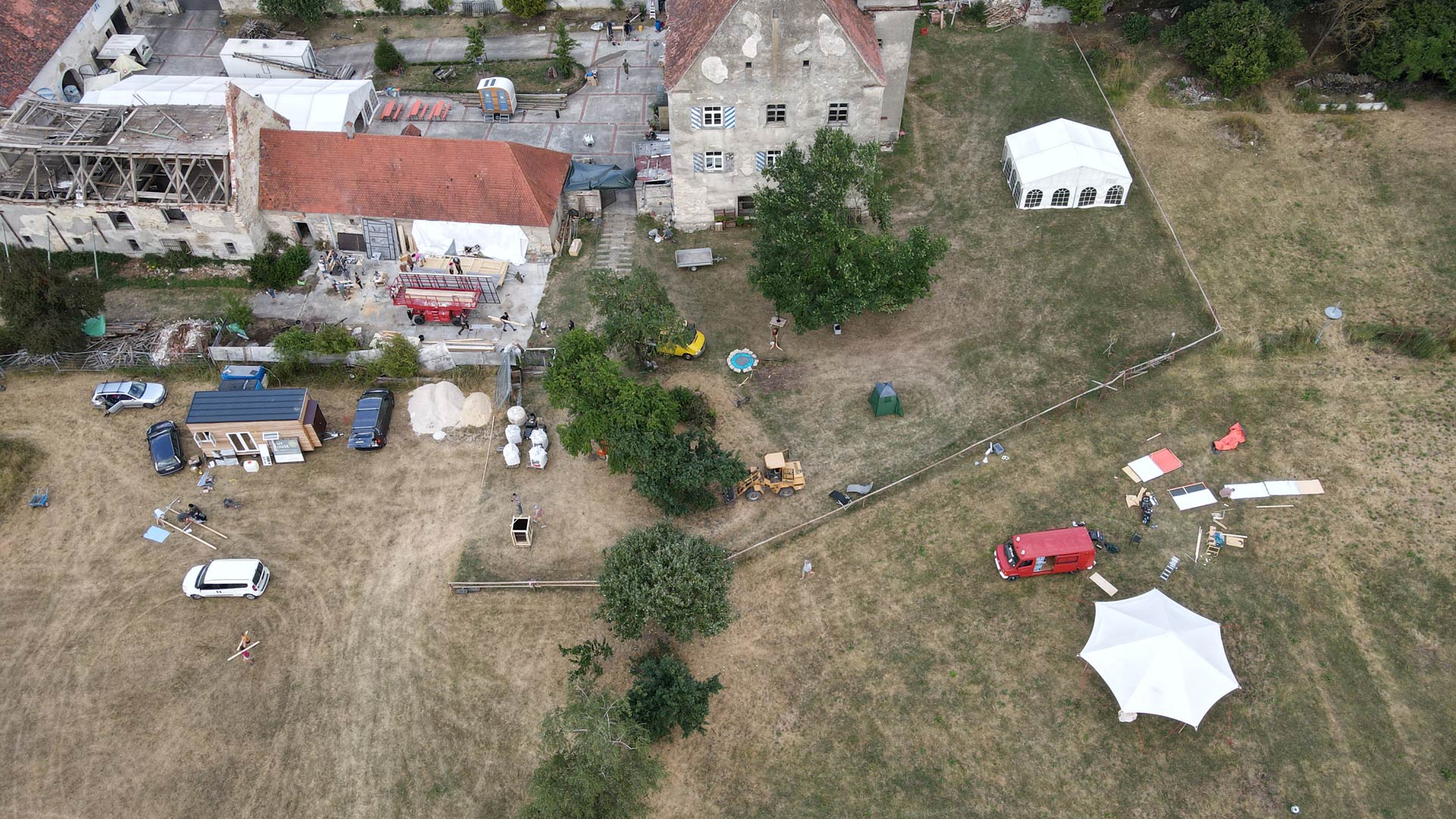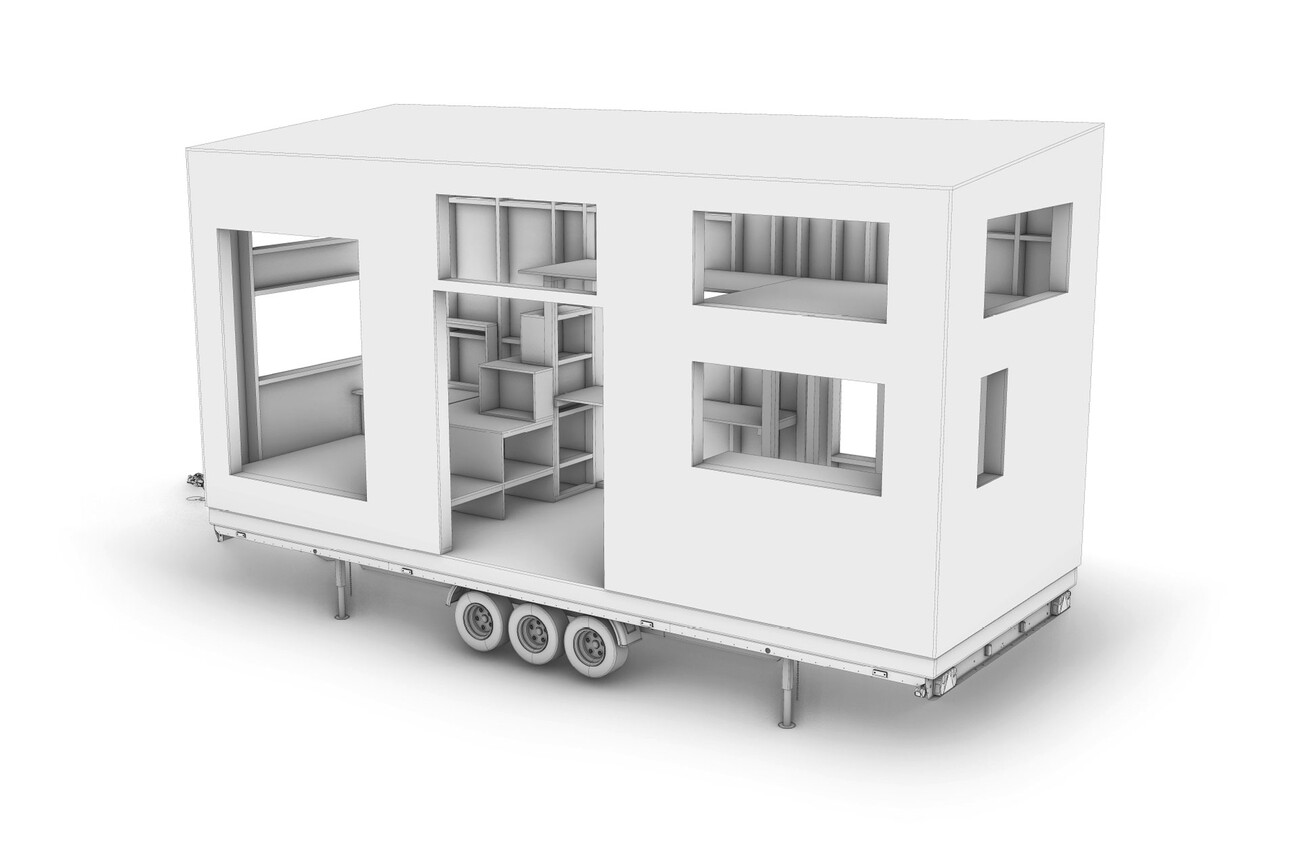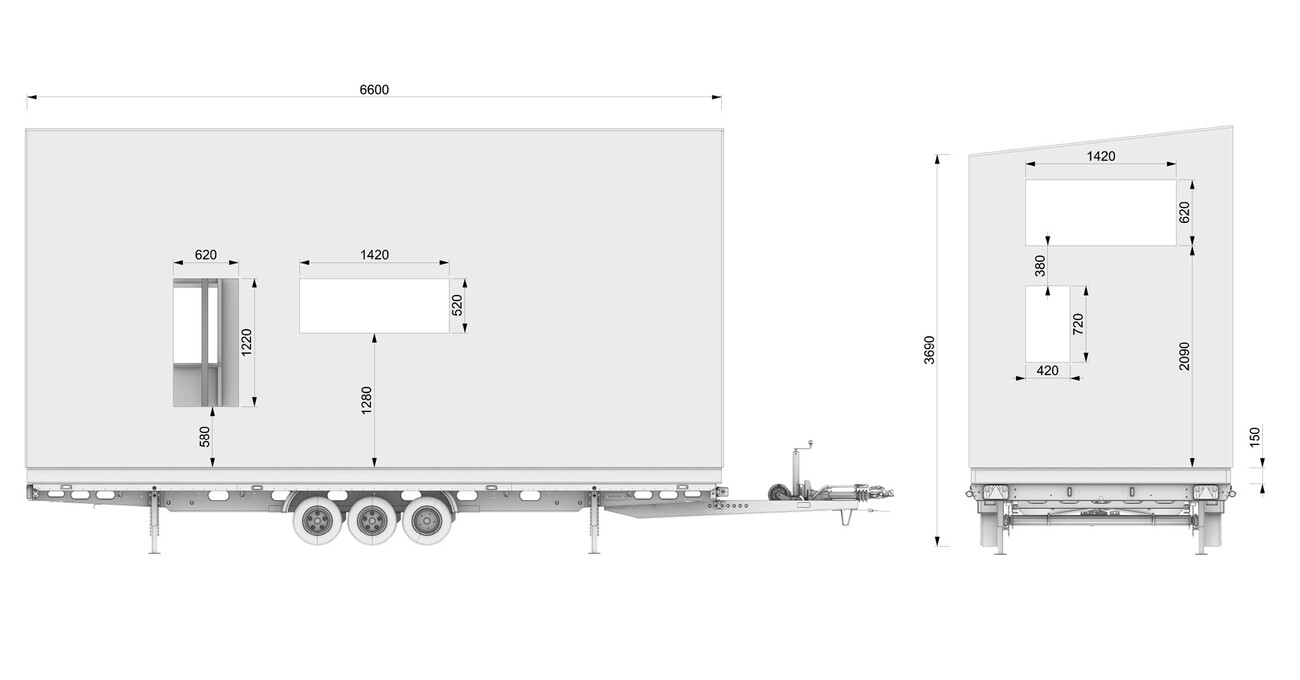Tiny House Workshop, Oberbechingen, Allemagne
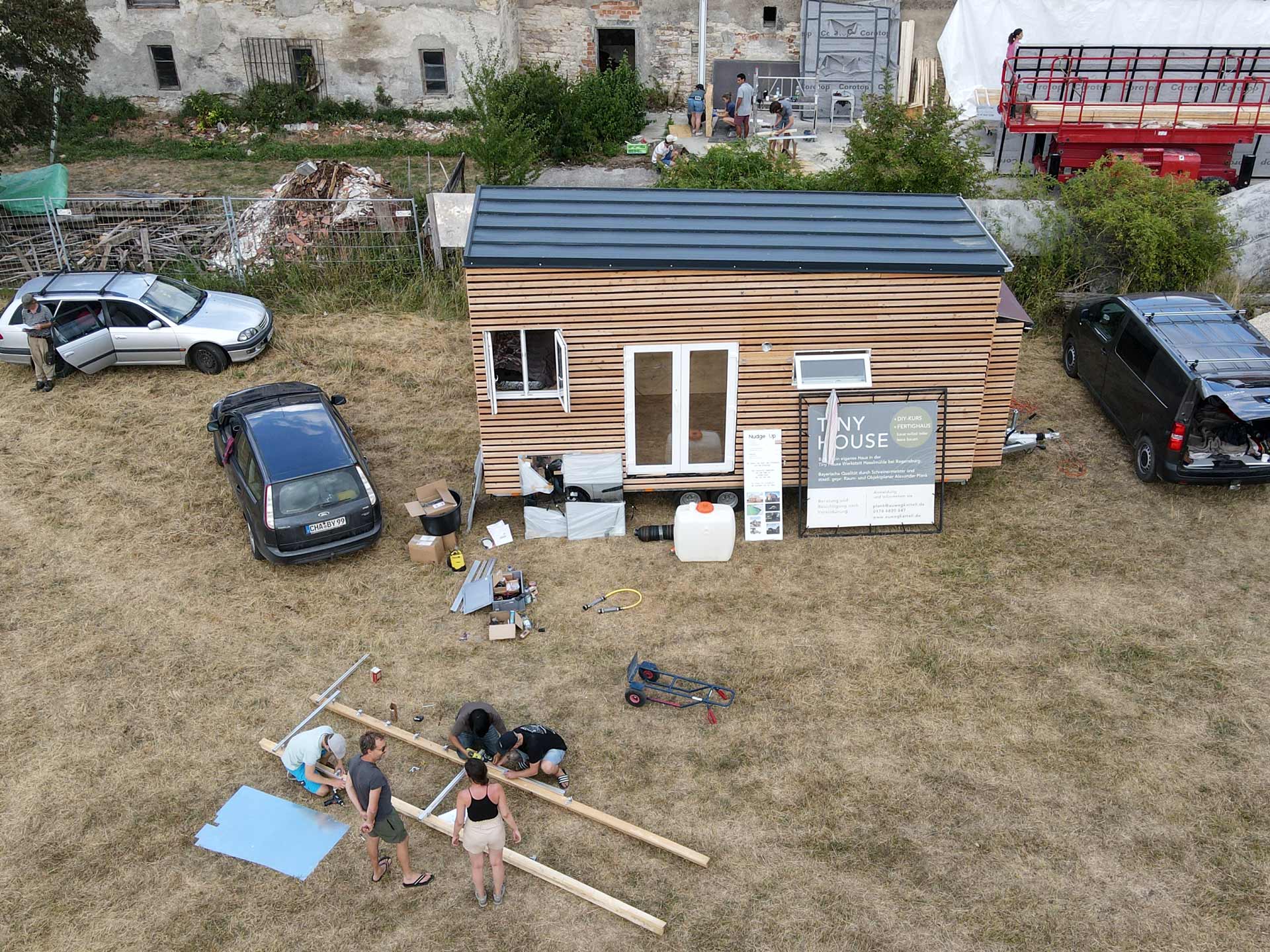
In the course of our 30th anniversary we organized the Transsolar Experience Days with different workshops, one of them was related to designing and building a Tiny House:
The overall dimensions of the Tiny House were defined based on the idea of building it on top of a trailer. Among the many advantages of using a pre-built trailer are the mobility, since the Tiny House can be hitched to a truck and moved to a new spot whenever the mood strikes. In addition, this solution does not need a concrete foundation, reducing its carbon footprint. The Tiny House has great dismantling and reuse flexibility and low construction costs.
We started with the base dimensions of 6.60 m x 2.44 m (21.5 x 8 ft), the same as the trailer. The height of the house from the floor – including the height of the trailer – to the highest side (north facade) is 3.96 m. The maximum height allowed by road laws for mobile homes is 4 meters (13 ft), so we tried to use as much space as possible within the established boundaries. The height from the ground to the lowest point of the house (south facade) is 3.69 m (12 ft). This results in a roof with a slope of about 8° to the south, which allows snow melt and rainwater to easily move off the roof. Also, sloped roofs are generally structurally stronger compared to flat roofs and the southward slope increases the potential for energy generation from photovoltaic panels on the roof.
The general layout allows for a living area, kitchen, a bathroom with shower and separation toilet, up to two working spaces, (making it suitable for home office) and a bedroom located on a mezzanine level, above the kitchen and bathroom area.
The living space is distributed on three levels: the main space (+0.00), and two other levels (+0.73 m / 2.4 ft and +1.15 m / 3.8 ft). In addition to providing a more interesting distribution of spaces, this allows maximizing storage, since the empty spaces between floors are used for such purpose. In total, the Tiny House has 9 windows (up to 140 x 60 cm / 4.6 x 2 ft ) and two large doors (200 x 150 cm) distributed in such a way that all spaces benefit from good daylight and views to the outside. All the windows are operable (horizontal pivot) which allows for improved natural - cross ventilation and night flushing.
The main construction material was pine wood. Wooden beams / boards were used for the main structure of the base, external-internal walls, and roof. Oriented Strand Boards (OSB) were mainly used for the main floors, kitchen counter, mezzanine level and upper ceiling. OSB was also used as the main material in the construction of furniture such as a standing desk, adjacent to the south facade, a folding table that can be used as a desk or as a bench to sit on, and the modular boxes that serve both as stair steps to access the upper level and storage spaces.
GUTEX Thermoflex panels, an ecological wood fiber product, were chosen for the insulation of the building. These panels have a thickness of 12 cm / 0.4 ft and size of 135 x 57.5 cm / 4.4 x 1.9 ft. and a thermal conductivity (λD) of just 0.036 W/m²K. They were installed so far in between the wooden frames at floor, ceiling, and the west façade. But the insulation works will of course, extend to the remaining external walls. Just a note from an energy-point-of-view: The performance of the wall insulation with a U-Value= 0.33 W/(m²K) does not comply with the German Energy Code for new buildings. However, there is an exception allowed in §2 GEG, if the utilization is less than four months per year.
The way in which the construction was devised from the beginning was to build the frames and supporting structure of the individual walls on the ground and then lift and fix them in place on the base. This modular construction method facilitated that several teams of people could work on different parts of the Tiny House simultaneously.
